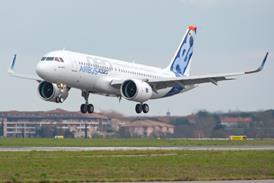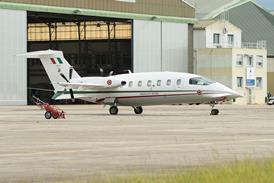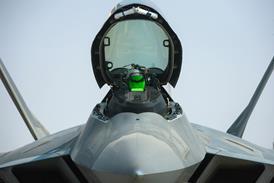From a distance, the competitive balance between the leading alliances appears largely unchanged as they race to cover the globe. But underlying differences are emerging in the way the groupings use their network reach
Given the tumult that characterised the airline industry over the past year, it is surprising that the global alliance picture is not more altered. It seems, however, that, although change was the rule and capacity swings were indeed wild, the situation more or less affected each alliance in a similar way, meaning that parity was maintained. So, while changes are certainly taking place, they have less to do with the alliances' networks and more with how they are using them.
While Qualiflyer did not survive the death of cornerstone members Swissair and Sabena, that grouping drew most of its membership from small- to medium-sized Europe-based carriers. As a consequence, its share of the vital intercontinental markets was so small that its demise will register hardly a ripple on the overall scorecard. It had held less than 4% of the world's scheduled passenger traffic, compared with close to 22%for the mighty Star.
It appears the former Qualiflyer members will now go their separate ways. Swiss, which emerged from the ashes of Swissair, has signed a comprehensive codeshare agreement with American Airlines and is a likely candidate for oneworld membership and Poland's flag carrier LOT is on course to join Star.
Rumours have linked TAP Air Portugal with SkyTeam, but the Portuguese carrier says that it will now look instead for bilateral codeshare agreements in specific strategic markets. The same also is true of SN Brussels, which took over the regional fleet of Belgian flag-carrier Sabena.
Amidst the focus on the mutlilateral groupings it is easy to forget the extent to which bilaterals still dominate. The latest Airline Business Airline Alliance Survey counts some 548 agreements between the world's leading passenger carriers, of which the bulk are codeshares. There were nearly 80 new codeshare pacts inked last year alone.
Global giants
However, Qualiflyer's demise is a sideshow in the battle for competitive advantage between the big global groupings. The key measure in that battle comes down to network coverage, the original reason behind the formation of the groupings. Despite initiatives, such as on joint purchasing, the core driver remains the size and shape of their combined route networks. The winner is the alliance that can get its passengers to the most destinations in the most ways.
By almost any measure, Star wins the network contest. The 15-strong grouping, which will soon welcome Asiana and Spanair, as well as LOT, leads the competition in practically every category. As demonstrated by figures from the OAG schedules database, Star's enviable reach means that it leads the class in terms of raw frequencies, system capacity and destinations served. It also leads on the number of destinations covered by more than one partner, a potentially important factor when it comes to forging connections and in creating critical mass at hubs where the individual partners alone have little presence.
Star has already set about exploiting these advantages. It aims to bring members "under one roof" at hubs across the globe. Going further still, plans are in motion to create dedicated Star terminals at Paris and Miami, home hubs to rivals Air France and American Airlines.
Even as market leader, Star has experienced how quickly the alliance landscape can change. Star was until recently running oneworld a close race for supremacy in Australasia. Then last year Star saw Australian member carrier Ansett go out of business, and now can only watch as Qantas contemplates purchasing badly weakened Air New Zealand. In the meantime, Star carriers are forging relationships with low-cost start-up Virgin Blue, but there is no denying the alliance has suffered a serious blow in a region it previously considered a point of strength.
In the face of Star's position as undisputed heavyweight champion, other alliances have had to accentuate other virtues. So oneworld talks of network quality and SkyTeam of its level of integration.
The oneworld alliance is the only competitor to beat Star on a core metric - covering more countries than the leader - and it does have several vital strengths. Clearly a viable competitor to Star in all system-wide measurements, and boasting a membership made up of some of the world's largest and most prestigious airlines, the oneworld story has to date still been perceived as one of unrealised potential.
The alliance's long-running and ultimately futile attempts to obtain regulatory approval for collaboration between flagship carriers American Airlines and British Airways has severely limited oneworld's forward momentum. Also, low-cost competition in Europe has hit oneworld harder than others, with BA and Aer Lingus forced to trim routes and frequencies in response. Managements too have had to spend time looking inward as they attempt to fix their own business models.
With BA/American antitrust now firmly off the agenda, however, oneworld has been regrouping, ready to sell its advantages. Alliance managing partner Peter Buecking stresses the quality rather than the brute size of the network. He argues that the members are closely aligned as quality intercontinental players, especially in Asia-Pacific through the presence of BA, Qantas and Cathay Pacific. While the main antitrust battle is lost, moves are being made elsewhere to raise co-operation. Finnair is looking for antitrust immunity with American, while BA and Iberia are exploring broad co-operation between the UK and Spain. Cathay and American could codeshare too depending on the final outcome of the ongoing USA-Hong Kong air service negotiations.
Buecking identifies the key gap in oneworld's network coverage as Central Europe, with Swiss the likely contender to fill it. However, Buecking is clear that Swiss first needs to reach agreement with the European members.
The Air France/Delta Air Lines-led SkyTeam grouping continues to make in-roads with its smaller, more integrated model, last year coaxing Alitalia to sign up for membership, bringing with it the lucrative Italian market. Agreement between Air France and Alitalia to operate the routes between France and Italy as a joint venture "bundle" will maintain this high level of integration.
In the same way, after concerns about safety saw its membership status downgraded to the point that member carriers declined to place their codes on its flights, Korean Air has been brought back into the fold, filling a vital gap in SkyTeam's coverage.
Asian weak point
Overall, however, Asia remains a weak point for SkyTeam. It has no home base further south than Seoul, while across the Pacific Delta lacks a true hub on the US West Coast.
These situations seriously constrain what the alliance can offer passengers in the region. Industry rumours continue to claim that the day approaches when SkyTeam finally woos Thai Airways International out of Star - in which the membership of neighbouring Singapore Airlines is said to be a source of tension. However, there are others who insist that reasons related to prestige and the volume of connecting traffic they receive will keep Thai in Star.
The "Wings" alliance between KLM and Northwest Airlines is at once the most integrated - the two carriers run their operations across the Atlantic as a joint venture - and the smallest. A distant also-ran in every measurement of network reach, Wings also has relationships with Malaysian Airlines and Kenya Airways, but its breadth is not yet in the same global class as the three leaders.
An analysis of market share on the world's four largest intercontinental segments provides another interesting measure of network coverage. As its sheer size would suggest, Star is the market leader on all but one of the markets. The exception is on flow between North and South America. There, oneworld can lay claim to 35% of the total seat capacity, thanks to American's hubs at Miami and San Juan, Puerto Rico.
In the Europe-Asia market, Star's multiple daily widebody frequencies by All Nippon, Austrian, Lufthansa, SAS, Singapore and Thai Airways trumps oneworld's offerings in the market by BA, Cathay, Finnair, Iberia and Qantas.
In the North America-Asia arena, United's protected position at Tokyo's Narita Airport and Star's wealth of partners in the Far East help the alliance command a clear majority of the capacity flown by between the two regions. Northwest's hub at Narita helps Wings capture 16% of the market - the only route in which it does not finish last.
Finally, on the North Atlantic, the real powerhouse of the alliances, Star wins again, but the race is tighter. And here SkyTeam is looking good, with antitrust immunity now tied up for all its members and Delta proving to be among the most solid of the US partners. No wonder that others are casting a wary eye on SkyTeam's progress.
Source: Airline Business























